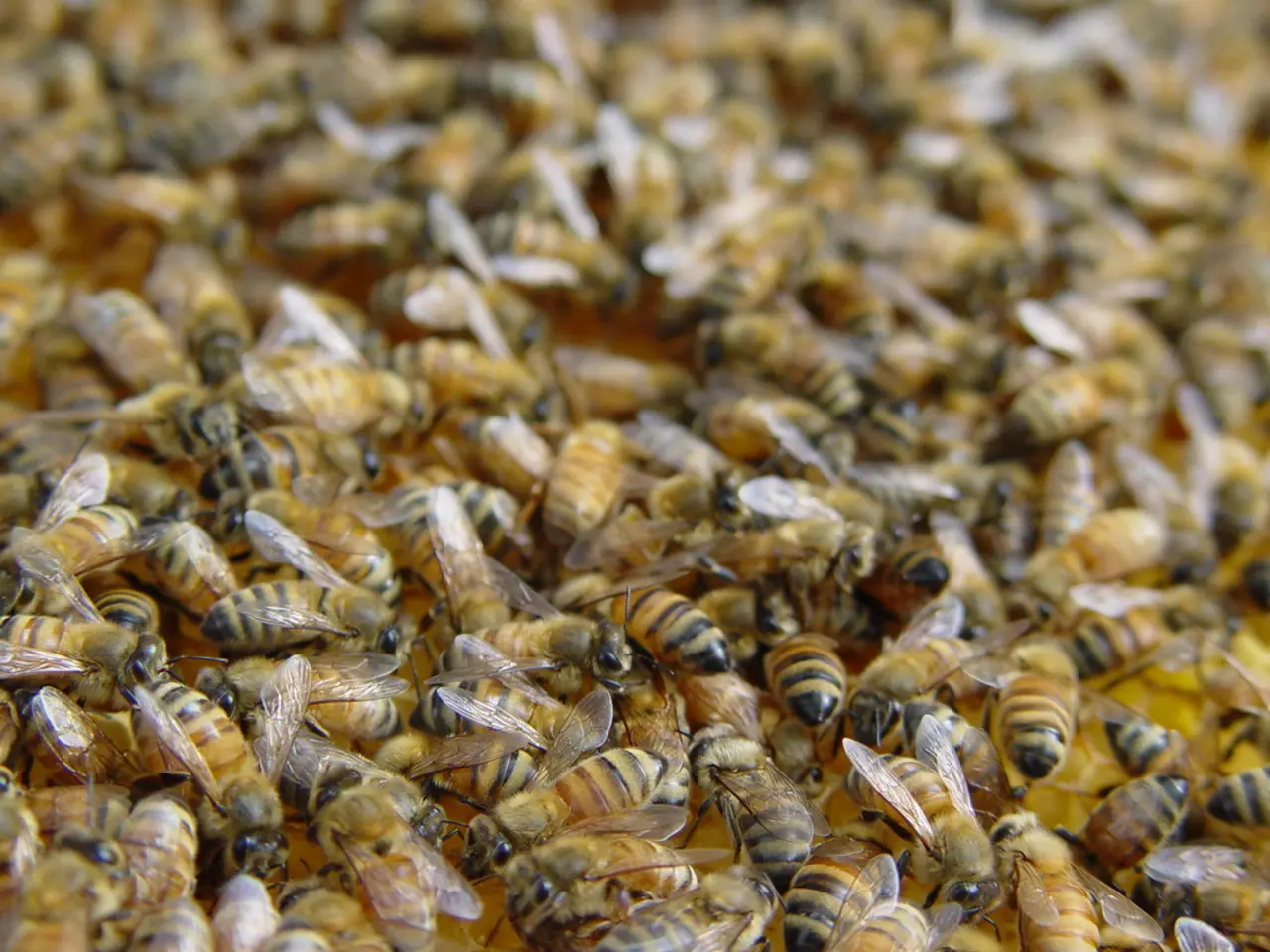Postponing Lawn Maintenance Could Aid Survival of This Year's Pollinating Creatures
==========================================================
In the spirit of service, growth, and well-being, gardeners can make a significant impact on the declining pollinator population. According to the USDA's 2022 Annual Pollinator Report, almost half of the world's pollinator species, including bees and butterflies, are at risk of extinction.
Helping pollinators while maintaining a beautiful garden is achievable. The USDA's report emphasizes several effective ways to support local pollinators, primarily focusing on habitat creation, plant selection, and minimizing chemical exposure.
One key recommendation is to plant diverse, native flowering plants that bloom at different times throughout the growing season. This provides continuous nectar and pollen sources for pollinators. Asters, milkweed, and bee balm are examples of native plants that are pollinator-friendly.
Establishing pollinator habitats is another crucial step. Wildflower meadows, hedgerows, and nesting sites are essential. Bare ground for solitary bees, dead wood, or bee hotels can provide safe homes for their young.
Avoiding or minimizing pesticide use, especially during bloom periods, is also recommended. This reduces direct harm to pollinators and preserves beneficial insect populations. Harsh pesticides and herbicides can be harmful to pollinators, so it's recommended to use natural pest control methods such as companion planting or using beneficial insects like ladybugs.
Providing water sources is equally important. Shallow dishes with pebbles or natural puddles can offer a safe drinking spot for pollinators.
Reducing lawn areas in favor of pollinator-friendly plantings can increase floral resources. If it's warm enough to plant tomatoes outside (overnight temperatures above 50°F), pollinators are likely safe.
Delaying the spring cleanup can also help protect local pollinators. Cleaning out garden debris like dead flowers too soon can wipe out entire pollinator populations before they've had a chance to wake up for spring.
Supporting conservation efforts is also vital. Encouraging land management practices aimed at improving pollinator health and diversity can foster a resilient pollinator environment in gardens and agricultural landscapes.
Bonnie Ferrero, an author and advocate for pollinator conservation, embodies a holistic approach to life. Her professional achievements, community involvement, and personal pursuits reflect a well-rounded balance in her life. Her interests include hiking, cooking, gardening, and home decorating, which allow her to express her creativity and connect with nature.
Thus, effective support for pollinators is a combination of providing diverse, pesticide-free floral and nesting resources, water availability, and promoting broader conservation initiatives. By following these guidelines, gardeners can contribute to a healthier and more diverse pollinator population.
[1]: USDA - Pollinator Conservation [2]: EPA - Pollinator Protection [3]: USDA - Honey Bee Colony Losses [4]: EPA - Pollinator Conservation Projects [5]: USDA - Conservation Projects
- Decorating homes with inspiration from gardens can reflect one's connection to nature, as demonstrated by Bonnie Ferrero who enjoys home decoration in addition to gardening.
- Incorporating pollinator-friendly plants, such as asters, milkweed, and bee balm, into home-and-garden projects not only enhances aesthetics but also supports the declining pollinator population, according to environmental-science reports.
- By planting diverse flowers that bloom at different times, gardeners can ensure a cleaner environment by attracting pollinators like bees and butterflies, thereby helping combat climate-change effects.
- The science behind pollinator conservation encourages creating pollinator habitats with wildflower meadows, hedgerows, and nesting sites for various pollinator species in both gardens and larger agricultural landscapes.
- Cleaning gardening projects can have unintended consequences; delaying the spring cleanup can protect pollinators during their delicate early- spring wake-up period.
- Collaborating on pollinator conservation projects, as suggested by resources like the USDA's conservation projects and EPA's pollinator conservation projects, can contribute significantly to the environmental sustainability and overall well-being of our planet.




